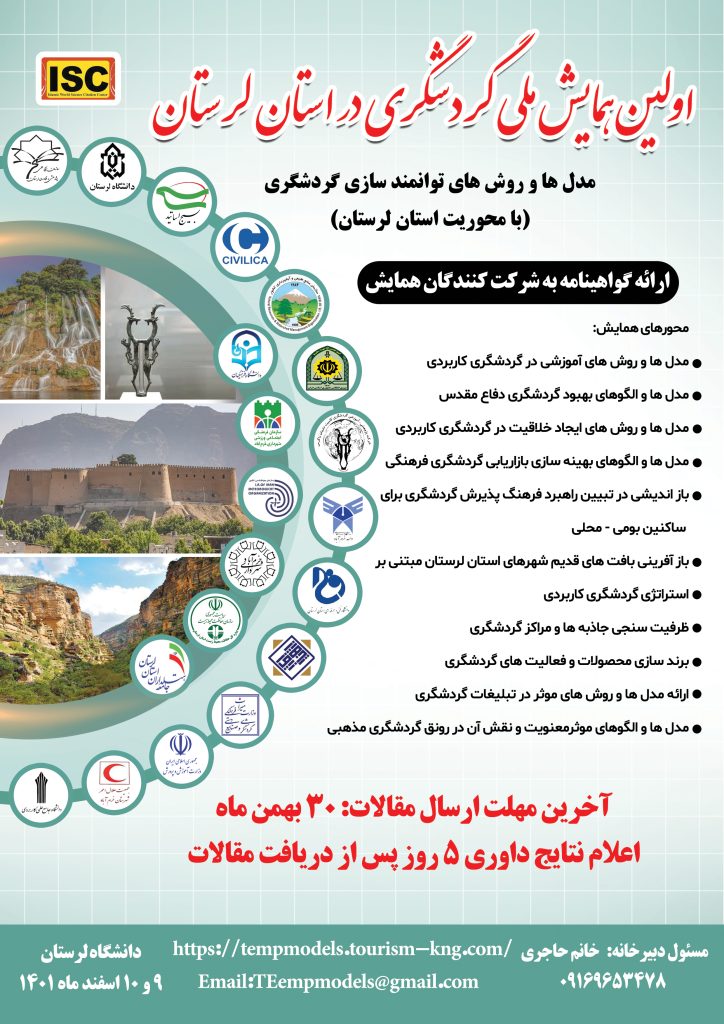Lorestan province has a varied climate. In the winter, when snow and blight and extreme cold flow in northern Lorestan, its southern parts are airy and rainy. Climatological surveys show that Khorramabad has moderate and warm summers and Borujerd has a mild cold and mild winter. Aligudarz also has a very cold, moderate summer.
The effect of aerial masses on Lorestan province during the warm and cold years is that in the cold season, the effect of Siberian high pressure on Lorestan province is twofold, if the Tabriz high pressure Siberian province influences from the north. , Its effect is cold air loss on the province. If the Siberian high pressure plate enters Iran from the northeast and penetrates into the south of Iran, with the expansion of the high pressure plate on the Persian Gulf and the Oman Sea, with the transfer of warm air And humidity to the southwest and southern part of Iran as a rainwater system of the province. In the case of Azores high-rise, it should be said that when the Azores high-pressure system during the cold season will strengthen the Mediterranean waves, and by transferring this hole to the east, it will transfer the Mediterranean cyclones to Iran and the Lorestan province, The west of Iran, with the Azores high-grade sand, falls on the cold and dry air and the air temperature is significantly reduced. The Mediterranean is one of the most important areas of cyclonetization. From the Mediterranean cyclone regions, the Eastern Mediterranean cyclone zone (Cyprus cyclone region) or the Transylvanian cyclone from the western Mediterranean, reinforced on Cyprus, are entering the province more than other cyclones.
Low pressure Sudan is one of the low thermal pressures that has a thermal source, this low pressure affects the Lorestan province in two states. In the low-pressure system of Sudan, after boosting Sudan along the Southwest – Northeast, it moves upwards and enters Iran from the south west and affects Lorestan province.
Rainfall resulting from these conditions on the area is a heavy raindrop or heavy snow. In the second case, Sudan low pressure is integrated with low pressure in the Mediterranean, and the merged state of the system enters Iran from the west and affects the Lorestan province.
But the aerial masses that affect the Lorestan province during the warm course of the year include:
Low local pressure
With the apparent motion of the sun at latitudes higher than spring equilibrium, the energy bill in the northern hemisphere gradually increases and the air temperature increases in the northern hemisphere. Due to the physical characteristics of the land, the increase in temperature is more intense in the land surface and, with the advent of Znma from the Earth’s surface into the lower layers of the atmosphere, the temperature of the underlying layer increases and the requirements for forming a warm heating system on the land As a result, from the warm period of the year, especially from late May or early October, local low-pressure cells are formed in Iran, sometimes these cells integrate most of the country and sometimes into cells Single is divided.
Regarding the pattern of current governing the system, sometimes hot and dry air from the south and southwest enters the province and increases the air temperature considerably.
Saudi Arabia’s tidal pressure
In the high pressure layers of the atmosphere, with the transfer of a tropical high pressure cell of Saudi Arabia to higher latitudes, the southern half of the country, especially its southwest, from the 850 hPa upwards is affected by this compressive system. As a result, the Lorestan province is also affected by the climatic effects of this dynamic system.
Topography, latitude, vegetation and access to moisture resources and … are among the factors that play a key role in determining the climate of a location (region), and sometimes even alter the role of forging factors.
In Lorestan province, local factors are effective in the weather, so that in the Lorestan province, the difference in height is very high, reaching a height of 300 meters in the Poldokhtor area and reaching more than 4000 meters in the north-eastern province. On top of the atmosphere of these mountains, the atmosphere is thinner and thinner, the energy is emitted more easily and the air temperature fluctuates more.
Mountainous regions of Lorestan province prevent the movement of moist air masses and cause them to precipitate more in their range.
In general Lorestan province has three climatic zones:
The semi-arid and hilly mountainous regions of Borujerd, Noorabad, Alshatr, Aligudarz and Azna are in this territory.
The semi-arid and temperate region of central Kuhdasht, Khoram Abad and its surroundings are in this territory.
Southern warm and dry areas: Pelot and Papi and its adjacent areas have this type of climate.
Wind situation in Lorestan province
Comparative studies on the dominant wind performance in the province’s boundary zone are that formation, continuity, range of performance, localized and localized emission, change in direction, channelization, and secondary dependent changes in the environment due to air pollution , Regardless of the general air flow, determine the morphological structure of the province.
In this regard, the existence of continuous mountain ranges from northwest to south-east, irregular elevation variations and their dispersion to the air masses are also low and low elevation areas in the range of mountains with different dimensions, including dependent factors These parameters change wind speed, direction, extent of operation and depth of penetration of winds in Lorestan province
According to the above, regarding the effect of local topography on speed, direction and wind of wind in different parts of the province, in addition to the dominant winds with the direction of southwest to the northeast, local winds are important.
In the Oligudarz region, the eastern-western wind flows from the easternmost points of the province during the cold season, flowing in the atrium in the north of Oshtarankh to the Azna and Oligudarz plains.
In the Borujerd area, the south-north winds are on the path to the Silakhor plain, there is a lot of cold and cold in the winter and moderate weather in the summer. In the north of Boroujerd, western-easterly winds from Nahavand are more severe than the winds that are more intense in the late summer and are important for the region’s agriculture due to adaptation to harvest season.
In the Drood area, the western-eastern wind moves away from the dust of the cement factory to the east of the city.
In the Khorramabad area, the northern and southern winds are known as the wind blowing, and in fact a local wind is due to the difference in air pressure and the height difference from the mountain to the plain.
In the Kuhdasht area, the warm wind (Miocene), which flows from Khuzistan, prevails in the summer.
Resource / Master Thesis, Islamic Azad University, Khorramabad Branch; Identification of climatic indices in order to prepare the ecotourism calendar of Lorestan province in summer, / Zienab Hajari









